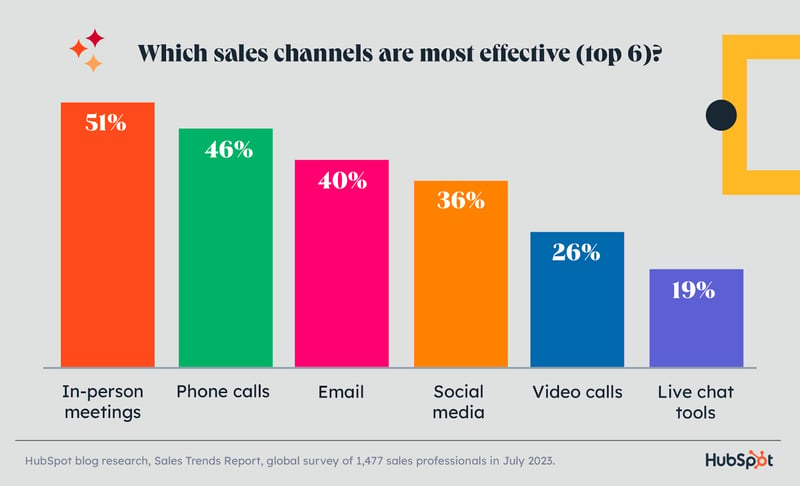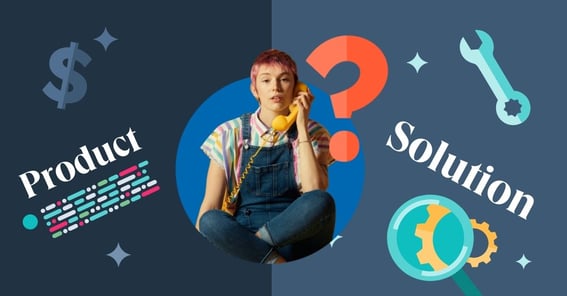Introduction
Every startup has to start somewhere, but it can feel daunting when it’s time to officially launch that first product and start selling it to consumers. But with the right strategy in place, what once felt intimidating can start to feel exciting, and you can launch with confidence.
When it comes to selling your first Software as a Service (SaaS) product, it’s not enough to just post about your launch on social media. You need to dig deep into research to find a well-planned sales strategy for a startup product launch.
For some startups, operating in stealth mode can protect your secrets, allowing you to outpace competitors for launch. Other startups may benefit more from a strategy that focuses on building in public, which can generate buzz and boost trust in your new brand.
So how do you determine the right sales strategy for your product launch, and when is the right time to start selling? Read on to find out.
When should startup founders start “selling” their products?
No matter how they decide to sell their products, startups will need to clearly identify a target market and prove product-market fit as part of the process of developing a GTM (go-to-market) strategy.. GTM is how you will actually reach your customers and deliver the product upon launch. There are two common frameworks to consider when building a GTM strategy: the traditional funnel focused on attracting leads or the flywheel focused on building new and existing relationships.
 Both can be beneficial for startups. Funnels are a trusted, traditional path of generating leads, but flywheel can help gain momentum for a startup by attracting and engaging new customers, leading to repeat buys and referrals. The flywheel is also well-suited to quick growth, which can be good for a startup that’s ready to scale.
Both can be beneficial for startups. Funnels are a trusted, traditional path of generating leads, but flywheel can help gain momentum for a startup by attracting and engaging new customers, leading to repeat buys and referrals. The flywheel is also well-suited to quick growth, which can be good for a startup that’s ready to scale.
Before you start diving into building a sales strategy to launch a startup product, you may be wondering how you’ll know it’s the right time to start selling in the first place. While it’s tempting to develop the “perfect” product, you don’t want to wait too long before launch.
“The right time for startup founders to begin selling their products is after they have built an audience and established trust with them,” TK Kader, founder of Unstoppable, told HubSpot.
Many experts recommend developing an MVP, or a minimum viable product. Once that has attracted some interest, Kader said startups can organize a mini-launch or use perks like a free trial to allow early adopters to test the product with little risk while also allowing them to gain valuable feedback.
Developing an MVP is just one of many ways to launch a SaaS product. Startups can build in stealth mode to keep competitors at bay. This process involves building up toward launch as quietly as possible. Rather than sharing details on the company website or sending out press releases about the upcoming product, stealth mode allows startups to build with as little attention as possible. This can be beneficial for disruptive startups, and it can help startups build a small but loyal following early on.
On the other hand, startups can also pursue a building-in-public (BIP) approach, where the startup shares as much information as possible throughout the process of developing and launching the product. Like stealth mode, this approach can also gain a loyal audience that becomes engaged and invested in the startup. It can also build credibility through transparency and communication.
John Hu, co-founder/CEO of Stan, is an excellent example of building in public.
As you can see, there are many ways to approach building a GTM strategy. Once that strategy is in place, though, and it’s finally time to go to market, it’s time to start considering ways you can actually start making sales.
Sales strategies to sell SaaS products
There are about 30,000 SaaS companies today, and only about 8% of SaaS startups succeed. In order to stand out from the vast amount of SaaS startups, it’s important to use strong startup sales strategies that don’t just focus on marketing the product, but also prioritize strong customer relationships.
After all, customer loyalty can really pay off: existing customers spend about 67% more than new customers.
“Build relationships, not just transactions: Especially in the early days, the relationships you build can be your most valuable assets,” William Ballance, co-founder and CEO at Lavender, told HubSpot. “These relationships can lead to referrals, partnerships, and repeat business. Your early adopters are incredibly valuable, and you want to nurture these relationships as much as possible.”
There are many ways to go about selling SaaS products, especially if you want to build strong client relationships in the process. Some of these methods include:
Social selling
Nurturing relationships with your audience and your customers is one of the most important steps to selling products as a startup. Social media is one path startups can follow to engage with their users and build trust and excitement around the brand.
You may not make quick sales through social media, but you can boost your startup’s reputation by connecting with your followers through social selling. With over 5 billion people on social media platforms, you can connect with users you may not be able to otherwise. Social selling also helps a startup learn more about prospective clients before sending a sales email or making a sales call, so sales reps can go in confident as they personalize their pitch.
Consultative selling
Rather than focusing on how great the startup’s product is, startups can use consultative selling to build relationships first and foremost, then make recommendations or provide advice on products that will work best for the client. This sales strategy can be especially helpful for SaaS, as sales reps can listen to the client and learn more about how they work, then direct them to the right software that helps them work more efficiently.
Webinars and events
If you want to generate some excitement about a new product, consider hosting a webinar or attending industry events, where you can connect with others and show off your product.
About 73% of B2B sales leaders and marketers believe webinars are the best way to generate leads, but that’s only if you listen to what clients want in a webinar. Rather than pitching the product, provide value through an educational webinar, then close with a sales pitch. Consider reserving time for questions, as 92% of attendees find value in a Q&A session in a webinar.
If budget allows, you can even host events and invite people within your target audience for sneak peaks or exclusive deals.
“These can be excellent for making personal connections with your users and prospects,” Ballance said. “We have built a reputation for our events and parties that we host at conferences, and it has been a huge unlock for moving deals along faster and increasing global awareness.”
Proprietary research
Startups can use proprietary research to make them a credible, trusted brand in their industry, giving them a competitive edge by providing information that no one else offers. Startups can gather proprietary research through surveys or analyzing client data to gather insights. From there, startups can use their findings to validate any claims they are making about their product and build trust.
Inbound sales
Rather than making cold calls and boasting about your products to anyone who will listen, inbound sales focuses on drawing in interested clients, through blogs, podcasts, videos, and other content that attracts your target audience. This strategy is personalized and offers value to clients, who then begin to trust your brand first before they start considering making a purchase.
Inbound sales is all about understanding the buyer’s journey, or where a buyer is in the process of buying a product. The buyer will go through awareness, consideration, and finally, the decision stage of the process. By using inbound sales, a startup can meet the buyer wherever they are in the process and tailor their sales approach to best suit the needs of the buyer right then.
AI-powered selling
Artificial intelligence, or AI, is making waves in the startup world, especially when it comes to selling. Startups can use AI tools to increase sales productivity, research the target audience, follow up with leads, and more.
“AI has been a game-changer for startups, especially in personalizing sales strategies, automating time-consuming tasks, and better brainstorming, research, and strategy planning,” Ballance said. “For instance, AI can help identify and prioritize leads that are more likely to convert, based on data patterns that might not be immediately obvious to humans.”
AI can help startups minimize costs while boosting revenue, too. According to The State of AI In Sales [New 2023 Data], sales reps can save two hours and 15 minutes every day by utilizing AI. Not only that, but the benefits are clear: AI can increase leads 50% while decreasing costs by 60%.
What are the most effective sales strategies for SaaS products?
One of the biggest trends for 2024 is the use of AI in sales (and everywhere else). According to Hubspot’s latest State of Sales report, 66% of sales respondents said that AI could help them make their interactions with potential customers more personalized, and professionals using AI to react to buyer emotions are 52% more likely to exceed their sales goals compared to sales reps that aren’t using AI in this way.
The report also found that in-person meetings with clients, sales calls, emails, social media, video calls, and even live chats are some of the top ways salespeople sell to customers.

You can get creative when it comes to outreach efforts, too.
“A cold email has an open rate of 10%. A paid AD has an engagement rate of 1.1%. A FedEx envelope sent to your ideal customer has an open rate of 99%,” Kader said.
However, about 62% of B2B buyers tend to do in-depth research before buying products. Offering self-service tools to boost sales can help SaaS startups by reaching buyers who aren’t looking to connect with a sales rep. According to the State of Sales report, sales reps who do offer self-service tools are 47% more likely to outperform their sales goals.
Sales strategy plan for new products
You can go through a product launching checklist to make sure you hit all the right notes ahead of the launch. From researching and defining the audience to creating marketing materials to developing the GTM strategy, there are many steps to take when it’s time to move toward a product launch. For startups, it’s also critical to make sure the product fits into the market and that the launch timing makes sense for the industry and the economy.
When you’re ready to start developing a sales strategy plan, follow these steps to set you up for success for selling a new product as a startup.
Define your audience
Before you can determine the best channels to sell your products or the best marketing tactics to drum up attention about your launch, it’s important to have a solid understanding of your audience. You’ll need to define your target audience, outline the demographics, consider their interests and hobbies, and even develop buyer and reader personas that consider your audience’s pain points that you can later solve with your products and content.
Get audience feedback
Ahead of the launch, you can interview people in your target audience to get a better idea of what they may be looking for when it comes to their goals and challenges. This information can help you narrow down how your SaaS products function, ensuring your product will offer solutions that other products on the market don’t.
When you create an MVP, you can even offer a demo to some of your early customers in exchange for their feedback. This allows you to resolve any issues with the product based on feedback, so the product is better prepared to launch to a broader audience.
Prepare the message
You’ll need to develop sales messaging that will hook people that come across your product and, ideally, convert them to customers. The sales messaging should speak to those personas you outlined earlier, keeping in mind who your customers are and what they need from your product. Consider audience feedback when developing your messaging, too, as this can help specifically address your customers’ needs.
When it comes to preparing the message, don’t forget to define why your product is right for the customer with a value proposition.
“Clearly articulate the unique benefits and value your SaaS product offers,” Kader said. “Focus on solving a specific problem or pain point for your target market.”
Empower the sales team
As part of developing the messaging, don’t forget to prepare sales enablement content at this stage. Sales enablement resources are tools that guide sales reps through the process of making a sale, with the goal of helping each rep close more deals. Customer case studies, phone scripts, and email templates are all examples of sales enablement resources a startup can use to prepare for a successful launch.
Sales teams can also benefit from a positive work culture, where communication is prioritized, and wins are not just noticed but celebrated. Consider offering incentives for meeting and exceeding goals to encourage sales reps to strive for success.
Further, startups should provide feedback and training to sales reps that empower them, letting them take the lead on sharing the product at industry events or engaging with followers on social media.
Use the right tools
There are endless tools out there to help startups launch their product and start making sales. For one, a customer relationship management (CRM) platform is essential to helping the sales team keep track of customers.
Smart sales tools can also help reduce time wasted on repetitive tasks, especially when sales teams tap into AI. AI tools can create content like informative blog posts or videos, tend to customers with a chatbot, determine the most promising leads to chase, or send personalized emails to clients.
Improve and boost sales
Using key performance indicators (KPIs) from your initial sales, analyze the data and suss out any weaknesses. Maybe certain methods, like emailing, aren’t working as well for sales, but you notice this channel lacks personalization. Use this time to improve your sales methods based on the data and customer feedback. Then, you can not only improve the product but also start thinking ahead to developing the next product.
How does a startup sell a newly launched product?
With a solid sales strategy in place, it’s time to consider how to actually sell a brand new product. There are many resources a startup can use to start selling their products, such as a CRM tool to better maintain relationships and upsell or cross-sell, or tools that boost sales productivity and empower sales reps.
To make sales, SaaS startups can partner with other businesses to reach a broader audience, or they can focus on direct sales by developing a strong sales team. Attending events can provide a space for startups to connect with potential clients, leading to lead generations or even direct sales at each event.
Content marketing is another way that startups can reach their audiences. This method involves creating valuable content, like blog posts or informational videos, that attract potential clients looking for answers to problems. From there, the content builds credibility for the startup, so the users feel more confident in purchasing from the brand.
“Use online channels such as social media, content marketing, and SEO to generate leads and raise awareness about your SaaS product,” Kader said. “This can complement your sales efforts and attract potential customers to your sales funnel.”
But as they say, don’t put all your eggs in one basket. In reality, you should approach selling your startup product in a variety of different ways that make sense for your business.
“There is no one silver bullet for sales, and in reality, you will be using a blended omnichannel approach that incorporates multiple (or all) of these channels,” Ballance said.
Start selling with confidence with a sales strategy for a startup product launch
Successfully launching a product all comes down to planning and communication. Whether you decide to build in stealth mode or share your progress with your fans every step of the way, you need to be strategic in how you launch a product as a startup. While more established companies may have leeway if a product launch doesn’t run as smoothly as planned, launching a product for the first time as a startup can ultimately make or break the company.
So how do you avoid mishaps? Clear communication and alignment not just across the sales team but among everyone at the startup is important. With plenty of research, a well-defined sales strategy in place, and a multifaceted approach to selling, startups can launch with confidence that their product will do well in the market.


 Both can be beneficial for startups. Funnels are a trusted, traditional path of generating leads, but
Both can be beneficial for startups. Funnels are a trusted, traditional path of generating leads, but 


